Eqraft (Netherlands) - Dacomex wanted to significantly expand its capacity for sorting and packing onions. A new hall with a modern production line offered the solution. It was a huge project involving many parties: from architect and contractor to utility installer and machine builder. They engaged Eqraft to supervise this complex process, act as link between all those parties and ensure everything ran smoothly.
Family company Dacomex from Sint-Maartensdijk in Zeeland has been exporting onions, potatoes and vegetables for four generations. The company is led by Martin van Damme and his sons Maarten and Jan, who are responsible for sales, purchasing and production. Since its foundation in 1961, the company has expanded to become one of the Netherlands’ biggest onion exporters. The lion’s share of their products go to Africa; some 60% of sales. The United Kingdom is another important destination as is South America and the Asia. Maarten who, as well as being sales manager was also the contact point during this project, firmly believes in the quality of Dutch onions: ‘As far as I’m concerned, the aim is maximum quality, not maximum tonnage.’
Eqraft as driving force:
To maintain that quality, he decided some three years ago that it was time to expand, as the company had started experiencing problems during busy periods: ‘We wanted to be able to work more calmly as well as supply large volumes if a client needed that at the last minute,’ explained Maarten. The machine fleet was also dated and in need of replacement. They eventually chose Eqraft, a supplier of various machines that also offers project management. Maarten: ‘Eqraft is a true onion specialist. We were seeking a party that knows exactly what the process involves.’
Design Brief:
The first phase of such a project starts by identifying the client’s requirements, explained Rutger Keurhorst, Eqraft’s commercial manager. ‘What does he want his company to look like once this project has been delivered?’ These ambitions also need to be qualified: what output does the client want and what flow is needed for this? Waste streams are also considered. Eqraft combines all this information in a Design Brief, including a flowchart and process description.
“We had lengthy discussions at the office to produce an optimal plan for Dacomex” — Rutger Keurhorst, Eqraft commercial manager.
In the case of Dacomex, the requirements were clear: on the one hand they wanted to replace the dated line and they also wanted to expand their capacity. The new line needed to be compact and be able to produce 60 tonnes per hour. Rutger: ‘To present a good plan that completely covered all the Dacomex requirements, we had lengthy discussions at the office. We asked each other critical questions: if I were Maarten, would I find this design compact enough? Or, what’s a logical layout for driving a forklift truck around the hall?’ For Maarten the effect of these discussions was clear: ‘As a company, you want to hear useful additions to your plan and be surprised by insights you didn’t yet have. With Eqraft, the plan improved at each and every meeting.’
Connecting factor:
Project manager Nico Bredenhoff entered the scene once all the requirements had been identified. He gave the rest of the team invaluable advice to safeguard quality and ensure that the project could be realised within the intended term and agreed budget. He also considered which third parties to involve in the process. Nico: ‘In this case, a new building was needed, so we involved an architect at an early stage. He could only start drawing and submit a quotation once he knew what kind of machine fleet needed to fit in the building,’ explained Nico. The right permits also needed to be applied for in time and you need to take potential nuisance into account: will the new factory make too much noise, will there be too many truck movements? Finally, Nico coordinated everything with the insurer, which set all kinds of safety requirements on the new hall and line. ‘This concerns such things as the location of the most fire-hazardous processes and compartmentalising the plant,’ explained Nico.
Discussions with the right parties:
He also had to coordinate with many other parties, including the structural engineer, contractor, utility installers, security camera installation company and other machine builders of parts that needed to be integrated within the Eqraft line, to name but a few. Nico: ‘In every phase, I meet with the right parties so that all considerations are discussed and Dacomex can make the right choices.’ He also considered all the practical details: ‘I make sure that clear agreements are made in advance about safety during the work, the construction site layout, where the toilets and canteens should be for our mechanics to use, and so on.’
“I think you always need a project manager for a new-build project” — Maarten van Damme, Dacomex sales manager.
The men met every other week. Maarten: ‘The evening before, I’d often sit thinking about what we needed to talk about the next day. But when we met, Nico always came up with one different agenda point after the other.’ For Maarten it offered real peace of mind that someone else was handling this process. ‘I think you always need a project manager for a new-build project. I don’t have that knowledge myself and you simply don’t have time to think about all those details: your company just keeps on running. And if you’re installing a new machine fleet, you want to do it right first time.’
Good planning is half the battle:
Nico produced a detailed roadmap and accompanying planning to ensure that the installation ran smoothly. The sequence really does matter. Nico mentioned a few examples: ‘The building needs to be released by the contractor before the machines can be installed. But sometimes the only way to get a machine in place is to install it first and then build a wall. If asphalt needs to be laid, we can’t then immediately drive over the site with trucks.’ Basically, everything is interwoven and if someone doesn’t keep a tight hold of the reins all the parties keep having to wait for each other. Moreover, it’s hugely important for the client that we minimise any downtime. Nico: ‘We work with various phases, ensuring that the phase in which the client’s line needs to be shut down is as short as possible.’ This is also taken into account in the installation sequencing, with the packing section being the first to be installed. If the sorting section couldn’t be ready in time, Dacomex could then sort the new harvest using the old line and package it using the new line. Fortunately, that proved unnecessary.
“If your planning is good, rolling it out is a piece of cake” — Nico Bredenhoff, Eqraft project manager.
During the installation, the Eqraft foreman Jorrit Boersma kept a watchful eye on site to ensure that everything ran according to schedule, while Nico kept a tight rein on everything from the office. But if he’s done his work well, he doesn’t need to intervene much during the busy and important phase, explained Nico: ‘If I ensure that the planning is correct before the busy period starts, I have the space to introduce changes to the installation if things turn out differently than planned. Then rolling it out is a piece of cake.’ Last minute improvisations are, of course, sometimes needed but, according to Nico, that challenge is what makes the work so much fun.
When the new line was delivered on time on 1 July, it became apparent that the harvest was delayed. This meant there were no onions for a test run. Martin van Damme then immediately went to buy a batch of onions and ran these over the new sorting line that same day.
Trust:
Nico’s detailed and attentive project management is in keeping with the total solution that Eqraft aims to offer: not only delivering a machine but also providing an important advisory role. Eqraft was involved with the new Dacomex line as supplier of various onion toppers, inspection chambers, evenflows, tipping bunkers, baggers and belts. But perhaps even more important was its role as coordinator: from the construction of the new hall to the delivery of the complete line, including coordination and agreements with third parties. Nico: “Customers entrust that responsibility to us because they know we’ll arrange everything well. Even if the line is relatively simple, an error can still have a huge impact on an onion company, with its biggest nightmare being unplanned downtime. If they can pass on that risk to us it saves a huge amount of stress.’












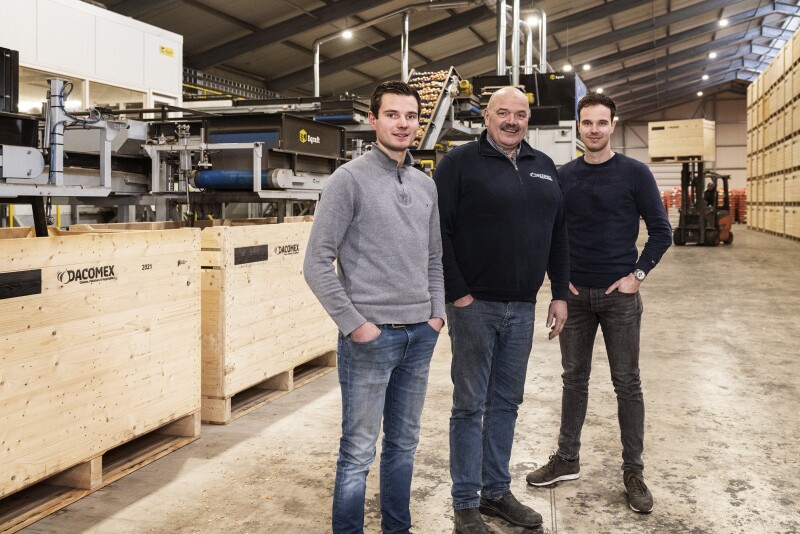
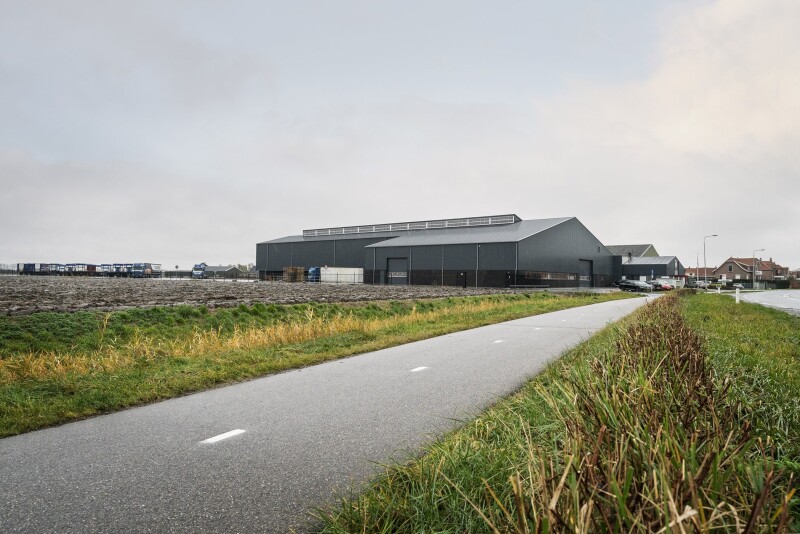
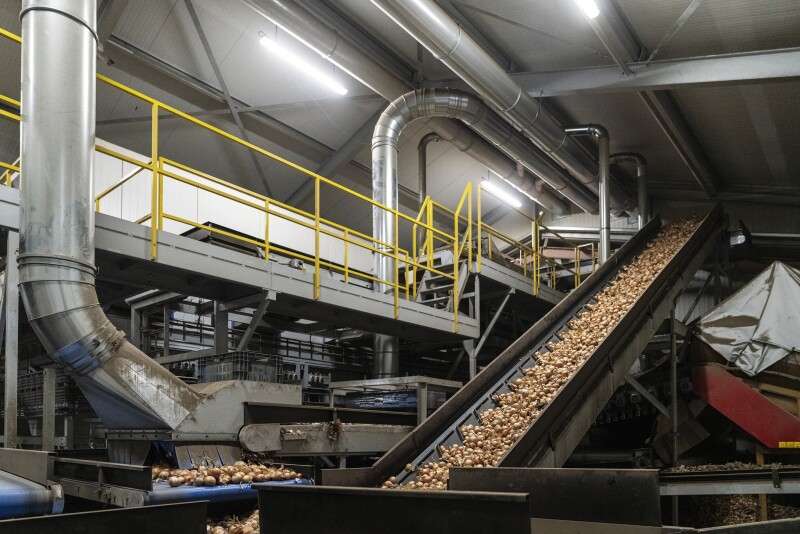
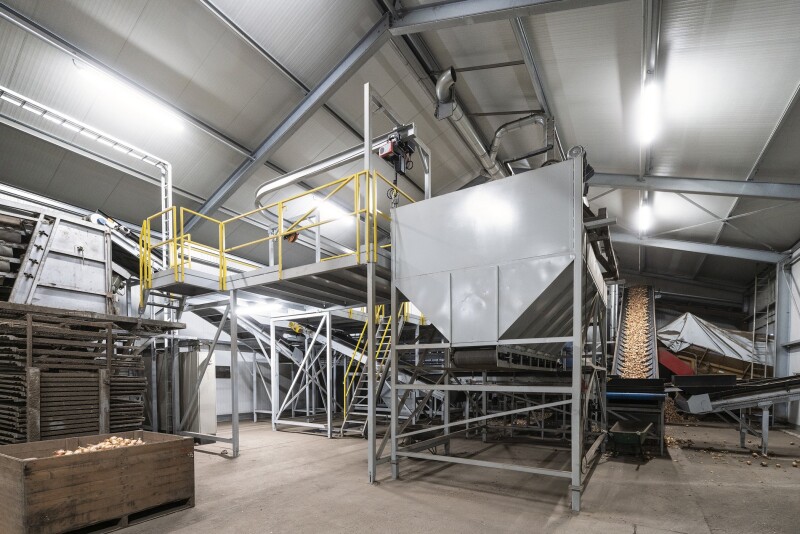


















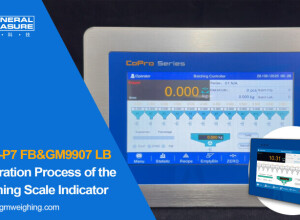












Interested? Submit your enquiry using the form below:
Only available for registered users. Sign In to your account or register here.